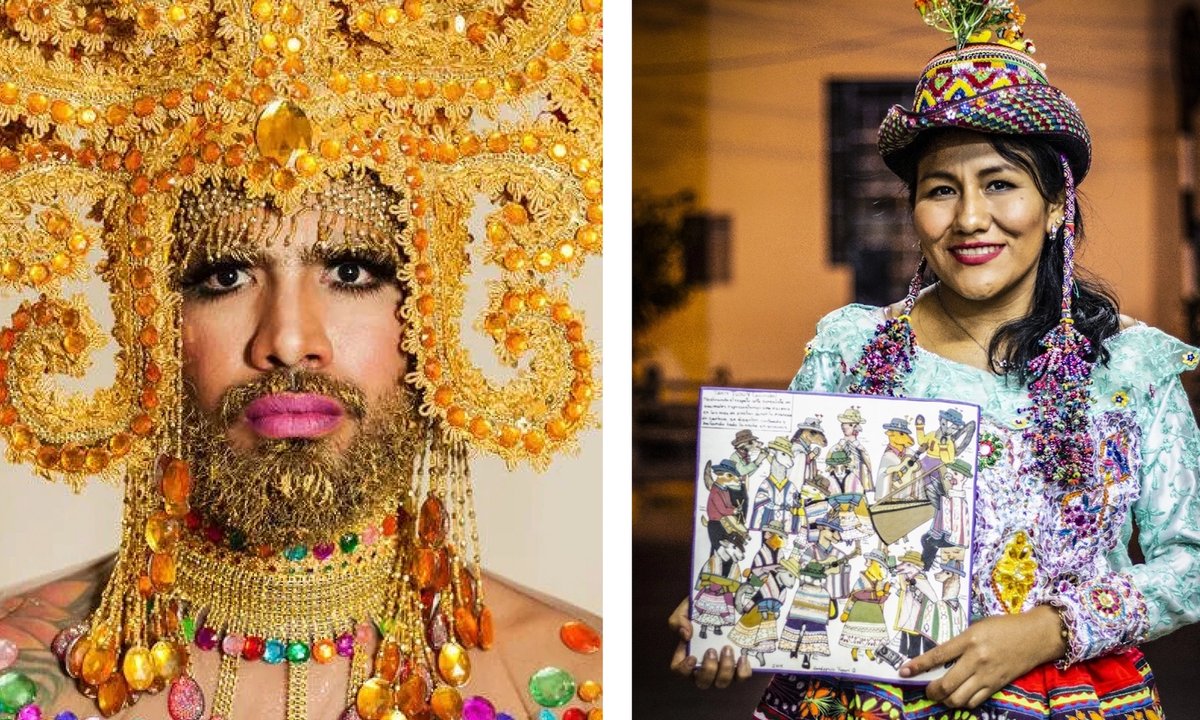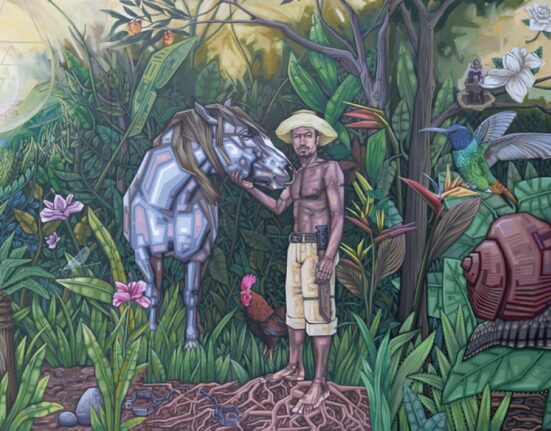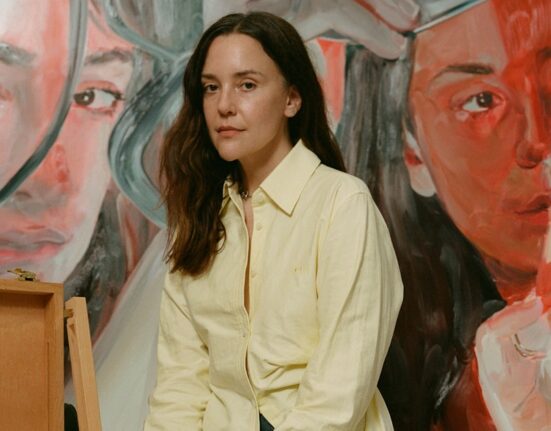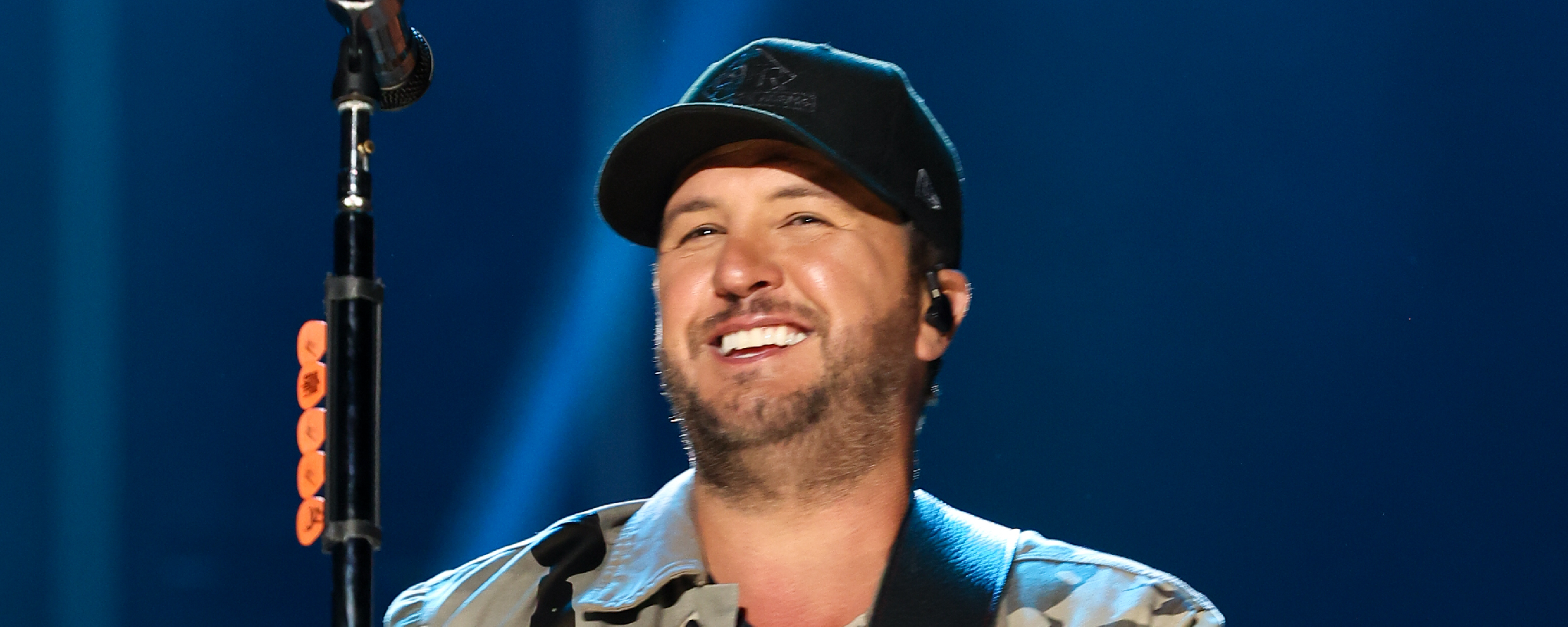The curator of the 60th Venice Biennale, Adriano Pedrosa, has revealed his plans for the world’s most prestigious exhibition which launches in April. There are 332 artists in total in the main international exhibition, entitled Foreigners Everywhere, which takes place in a “world rife with crises concerning movement of people across borders”, Pedrosa said in a press briefing held this morning.
“Wherever you go, you will always encounter foreigners… no matter where you find yourself, you are always deep down inside a foreigner,” said Pedrosa. The thesis expresses “differences and disparities conditioned by [issues such as] race, sexuality and wealth etc.”, he added.
Pedrosa says that he feels his own experiences are reflected in the theme. “I have lived abroad and been fortunate to travel extensively,” he said, stressing that he has often been treated as a “third-world foreigner” even though he holds “one of the highest-ranking passports of the Global South. [Pedrosa is Brazilian]” Crucially, he said: “I also identify as queer, the first openly queer of curator [of the Biennale].”
The theme especially takes on extra resonance in Venice, he added. “At one point, Venice was the most important centre for trade in Mediterranean. The population [today] consists of 50,000; this may reach 165,000 during peak seasons due to enormous numbers of tourists… foreigners of a privileged kind.”
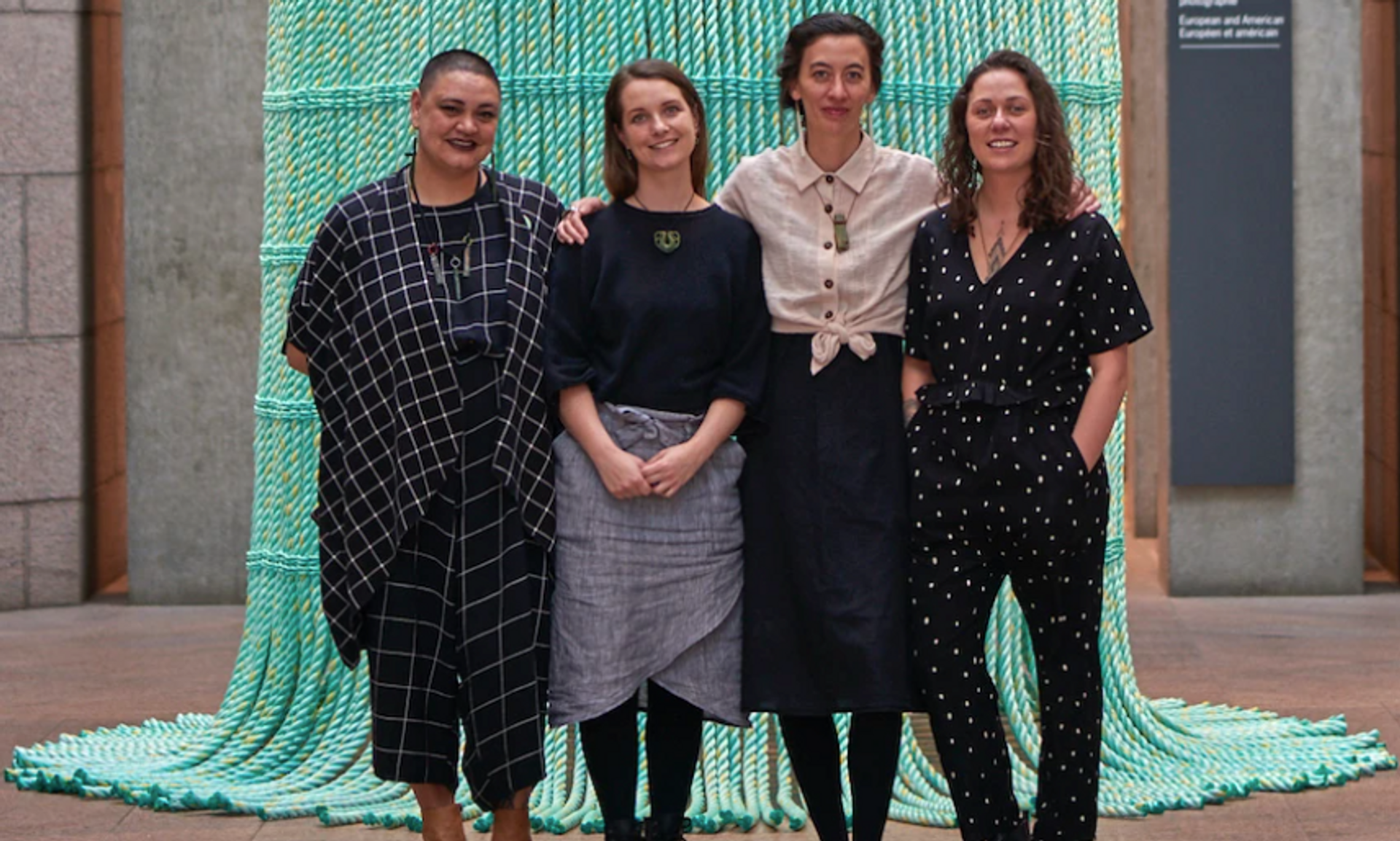
New Zealand’s Mataaho, a collective of four Māori women artists / Mataaho in front of AKA (2019), exhibited in Àbadakone | Continuous Fire | Feu Continuel, National Gallery of Canada, Ottawa.
Photo courtesy of National Gallery of Canada
He also said that the theme can be considered as “a call to action. This assumes critical significance around Europe when the number of forcibly displaced people hit its highest in 2022 at 108 million; this is expected to grow in 2023.”
The aesthetic thread underpinning the Biennale comes from the Paris-based collective Claire Fontaine who made a number of neon sculptures rendering the phrase “Stranieri Ovunque” or “Foreigners Everywhere” (the phrase initially derives from the name of a Turin collective who fought racism and xenophobia in Italy in the early 2000s). Several sculptures by Claire Fontaine will be shown around the Arsenale exhibition site (the former shipyards in Venice).
Indigenous artists will have a strong “emblematic” presence in the show, said Pedrosa. The Mahku collective, who come from the border of Brazil and Peru, will paint a monumental mural on the façade of the Central Pavilion in the Giardini. In the Arsenale, the Mataaho collective from New Zealand will present a large installation in the first room.

Dean Sameshima’s Secret Historian (no. 2), 2010; Dean Sameshima is just one of several queer artists whose work will be shown in the nucleo contemporaneo
Courtesy the artist and Soft Opening, London
Queer artists will feature in one of the nucleo contemporaneo (contemporary nuclei) including Erica Rutherford; Isaac Chong Wai; Elyla; Violeta Quispe; Louis Fratino and Dean Sameshima. A room devoted to “queer abstraction” will feature works by China-born Evelyn Taocheng Wang.
There will also be a special section devoted to the Disobedience Archive, established by Marco Scotini which is described on the organisation’s website as a “user’s guide to four decades of social disobedience seen through history and geography”.
There will be a focus on textiles, with works by the Chilean sewing collective Bordadoras de Isla Negra as well as artists Dana Awartini, Frieda Toranzo-Jaeger, Liz Collins, Pacita Abad and Yinka Shonibare. A section also concentrates on “artists related by blood” including Susanne Wenger and her adopted son, Sangodare Gbadegesin Ajala. This part will also include Lorna Selim and Jewad Selim.
The Biennale will also feature a Nucleo Storico (historical nuclei), a section comprising works by 20th-century artists from Latin America, Africa, the Arab world, and Asia dating from 1905 to 1990. “European modernism travelled far beyond Europe throughout the 20th century, often intertwined with colonialism, and many artists in the Global South travelled to Europe to be exposed to it. Yet modernism was appropriated, devoured and cannibalised in the Global South, repeatedly taking on radically new shapes and forms in dialogue with local and indigenous references,” Pedrosa said earlier this year.
The Nucleo Storico will be divided into three sections: portraits, abstraction and the Italian diaspora which comprises one work per artist, spread across the Central Pavilion and the Arsenale. The portraits section will feature 112 artists including Selwyn Wilson, Cícero Dias, Yêdamaria, Laura Rodig, Rómulo Rozo, Inji Aflatoun, Grace Salome Kwami, Lee Quede and Gerard Sekoto.
“Abstraction” will feature Sandy Adsett, Fanny Sanín, Etel Adnan, Eduardo Terrazas and Samia Halaby. The section devoted to the worldwide Italian artistic diaspora in the 20th century features artists such as Lidy Prati, Nenne Sanguineti Poggi, Gianni Bertini and Lina Bo Bardi.
The outgoing president of the Biennale, Roberto Cicutto, highlighted the political dimension of the Venice Biennale. The last Biennale in 2022 was “prophetic given the tragic events over the past four years… [against the backdrop of] Russian aggression in Ukraine, the Hamas attack and the tragic consequences [of Israel’s bombardment] of the Gaza strip.” The Biennale is a “privileged vantage point [from which one] can curate the world”, he added. Cicutto is set to be replaced by the right-wing commentator Pietrangelo Buttafuoco.

